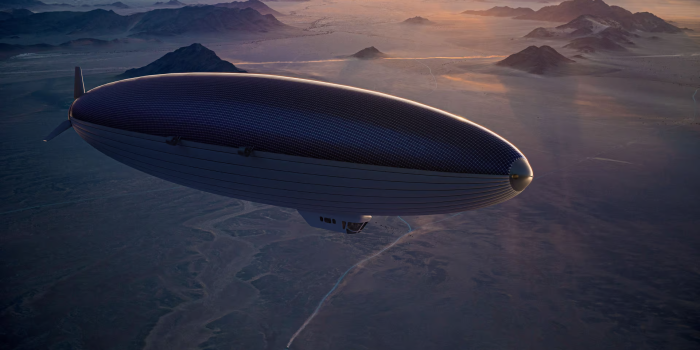Imagine circumnavigating the entire equator in a journey powered solely by the sun and hydrogen, with zero emissions to speak of. While it may not break any speed records, the Solar Airship One aims to do just that, offering a sustainable and leisurely approach to long-distance travel.
This 151-meter (495-foot) solar-powered airship boasts an impressive solar film covering its upper surface, equating to around 4,800 square meters (51,700 square feet) of solar power generation. This ambitious project is set to take flight in 2026, led by a team of experienced aviators and adventure seekers.
Solar Airship One is a groundbreaking concept in the world of aviation. With its entire upper surface blanketed in solar film, this airship will harness the sun’s energy during the day to power its electric propulsion systems and store excess energy by converting water into hydrogen via electrolysis. During the night, the stored hydrogen will be used in a fuel cell to keep the airship afloat and moving forward.

The airship will be piloted by a team of three remarkable individuals, including former French astronaut and Air Force pilot Michel Tognini, paraplegic plane-crash survivor and aerobatic pilot Dorine Bourneton, and the renowned adventurer and “inspioneer” Bertrand Piccard, who achieved fame with the first successful non-stop balloon circumnavigation in 1999 and piloted the Solar Impulse 2 on its historic round-the-world solar flight from 2015 to 2016.
While the Solar Airship One won’t be breaking any speed records, its design offers unique advantages. With an expected average speed of slightly over 83 kilometers per hour (52 miles per hour), it’s a far cry from the speed of conventional airliners. However, airships offer the flexibility to stop and start at virtually any location, eliminating the need for dedicated runways.
Beyond leisurely travel, some experts believe that hydrogen-filled airships hold the key to the future of zero-emissions cargo transportation. These airships can carry payloads eight to ten times larger than cargo planes, at a fraction of the cost, and up to ten times the speed of cargo ships.

However, it’s important to note that while the energy used by Solar Airship One is renewable, one vital component isn’t: helium. The airship’s rigid structure is filled with helium, a non-replaceable element on Earth. When released into the atmosphere, helium escapes into space, making it a finite and irreplaceable resource.
The Euro Airship team plans to embark on its zero-carbon circumnavigation adventure in 2026. Their journey will follow the equator at approximately 6,000 meters (19,700 feet), demonstrating a slow yet environmentally conscious approach to long-distance travel in a world that increasingly values sustainability.
Source: Orange/Euro Airship


